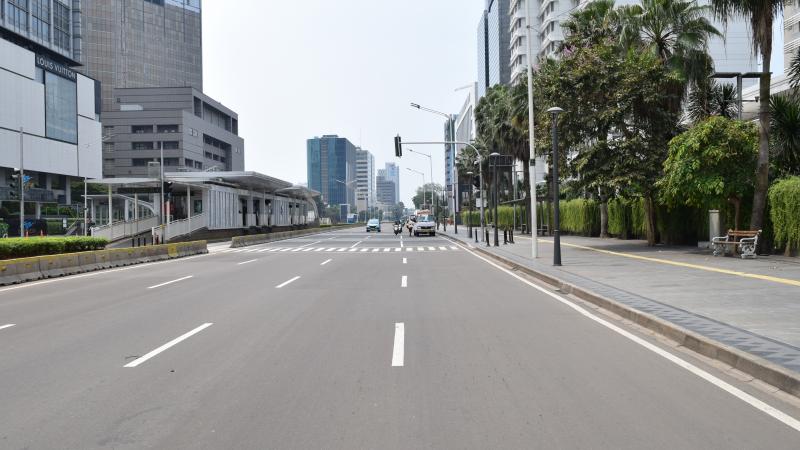Transport
The movement of people and goods from one place to another is a basic requirement for the functioning of human society and is intrinsic to the production and use of goods and services. The transport sector directly contributes 15–20% of gross domestic product (GDP) in most countries, and indirectly enables other sectors—such as agriculture, industry, education and health—to contribute to social and economic development. By helping to expand economic opportunities and services, and providing people with access and mobility, transport contributes to poverty reduction and inclusive growth.
The global development agenda for transport is centered around implementation of the 2030 Agenda for Sustainable Development and the Sustainable Development Goals (SDGs) adopted by the UN General Assembly in 2015. Five SDGs include direct targets for transport covering sustainable infrastructure SDGs (including rural access, connectivity, climate adaptation and road maintenance). Meanwhile, other SDGs include indirect targets for transport covering the role of transport in agricultural productivity, access to safe drinking water, mobility within sustainable cities, climate mitigation, climate adaptation, and reduction of air pollution, food loss and waste.
The Transport sector is a mean to achieve poverty reduction by increasing economic efficiency. A better transport sector means a reduced cost of access to better education, health and market opportunities. Such access will directly contribute to the growth in terms of value and quality of the economic development indicators in any country.
Transport is one of the main sectors of IsDB operations, accounting for more than 30% of its project portfolio. Since its inception, IsDB has provided $7.5 billion for road projects, $2.0 billion for railways, $1.0 billion for ports and shipping, and $0.54 billion for civil aviation operations. During 2012–19, on average IsDB approved 10 new transport projects for a total of $1.0 billion each year. About 64.3% of approved financing was for roads and 17.4% for rail projects, 9.0% for ports, waterways and shipping, water ways, 5.4% for civil aviation and 3.9% on urban transport. These subsector financing shares are similar to other MDBs, except that other MDBs have generally provided a lower proportion of financing for roads (60% during 2012–17) and a higher proportion for urban transport (18% during 2012–17). IsDB’s higher financing of roads and lower financing of urban transport was because many of its MCs are low-income countries that are less urbanized and have yet to complete their core national road network.

Most of IsDB support for transport is in the form of sovereign financing. This has also been the case with most other MDBs. This reflects the role of transport as an essential public good that enables many other aspects of economic and social development, and the underdeveloped situation of many Member Countries where traffic levels for priority transport investments are often too low to be attractive for use of PPP approaches. As countries continue to develop, there will be more projects with sufficient traffic for using PPP.
The IsDB has been active in all major global initiatives in the transport sector such as the UN Decade for action for Road Safety launched in 2010, the MDB Rio+20 commitment in 2012 for Sustainable Transport, the Global Sustainable Transport Conference in Ashgabat in 2015 and the SuM4ALL initiative launched in 2016. In addition, IsDB actively participates in the two major annual events in the transport sector, which are the International Transport Forum (ITF) meetings held in Leipzig, Germany and the Transforming Transport meetings held in Washington DC, USA. Maintaining presence and participation in these platforms and working groups is important to ensure global recognition of IsDB footprint in the sector across its constituency. IsDB is also a member of the World Group for Road Safety (WGRS) and is promoting road safety along with other MDBs through different initiatives.
The IsDB has developed and approved its first Transport Sector Strategy, to guide the IsDB on its future specific transport interventions needed in each region during the next five years. This strategy aims to leverage on the successes of the transport sector activities of the Bank over the last decade and since Rio+20 in particular, but at the same time address the needs of the transport sector interventions, per modes, in critical areas such as sustainability of the operations, country selectivity and integration of efficiency or development effectiveness considerations in project preparation and implementation. Given the growing transport sector needs in MCs and the limited resources of the Bank, the transport sector is expected to be one of the most critical sectors to build effective partnerships with other financing institutions and attract private sector investments, in line with the new strategic orientations of the IsDB.